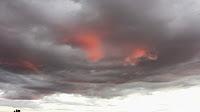Click here to read this mailing online.
Here are the latest updates for nurhasaan10@gmail.com "Free Technology for Teachers" - 2 new articles
Updated - Screencasting on Chromebooks - Built-in Tool vs. Third-party ToolsBack in June Google introduced a new screencasting tool for Chromebooks. Back then I wrote a comparison of the Chrome OS screencast tool and some others that are available to use on Chromebooks. Since then Screencastify has changed their free plan and Flipgrid has been renamed as Microsoft Flip. So I think it's time that I publish an updated overview of the screencasting tools available for use on Chromebooks. Chrome OS Built-in Recorder The shortcomings of the Chrome OS screencast recorder are the limited drawing tools and limited editing tools. It will probably get better in time, but right now it doesn't have nearly as many drawing and editing options as other screencasting tools like Screencastify and Loom. Screencastify Screencastify was one of the first screencasting tools developed specifically for Chromebooks (it should be noted that it can work on any computer running the Chrome web browser). Over the years it has improved in leaps and bounds. Today, Screencastify offers more than just a tool for recording a video of your screen. It offers a complete video editing platform. With Screencastify you can record your screen, use a wide variety of drawing and zoom tools, and edit your recordings in your web browser. Recordings can be automatically saved to your Google Drive account, downloaded as MP4 files, and shared to other services including Google Classroom, YouTube, and EDpuzzle. The editing tools in Screencastify include cropping, splitting, and merging clips. It also provides tools for blurring faces and objects in your videos. Finally, you can use Screencastify to build must-answer questions into your videos before you share them with your students. It should be noted that on October 3, 2022 Screencastify introduced some severe limitations to the features mentioned above for those who are using Screencastify's free plan. Those limitations include a limit of having only ten videos in your account, a limit of only 30 minutes of export time (the total amount of video that you download from your account), and videos can't be exported as MP4 files. Those limitations make Screencastify's free plan not nearly as a good an option as the Chrome OS screen recorder or Loom's free plan for educators. Loom Loom is a popular screencasting tool partly because they offer a generous list of free features for teachers and because those features work really well. Perhaps my favorite of those features is the ability to record a screencast directly from your Gmail inbox or from anywhere else in your Chrome browser. Loom also offers automatic transcript generation, viewing insights (get notifications when people watch your videos), and a tool for suppressing background noise in your recordings. Loom lets you download your recordings and MP4 files and share your videos directly to variety of places including YouTube. Here's a demo of how I used Loom and Google Jamboard to make whiteboard videos. Microsoft Flip Although it's known for it, Microsoft Flip does offer a convenient screencast recording tool. It doesn't include a capability to draw on the screen while recording, but it is easy to use and easy to share your recordings with your students. You can also combine a screencast with a simple webcam video or whiteboard video that you make in Flip. Here's a demonstration of how to make a whiteboard video in Microsoft Flip. If you want to know more about Flip's other uses, take a look at this playlist of videos. Creative Storm - A Student Video ContestCreative Storm 2022 is the title of the latest Next Vista for Learning video contest. Like previous Next Vista contests, this one is open to students and teachers. There is a category for student-produced videos, a category for teacher-produced videos, and a category for videos created through the collaborative efforts of teachers and students. Regardless of the category, all videos must teach a lesson in 90 seconds or less. The lesson can be about almost any concept a person would learn about in elementary, middle, or high school. Entries into Next Vista's Creative Storm video contest must be received by December 16th. There is a small bonus for those who submit their entries by November 18th. Contest winners receive Amazon gift cards and the pride of showcasing their videos for a larger audience. Complete contest rules and instructions can be read here. Take a look at this video made by a Kindergarten class or any of the previous contest's finalists here for some inspiration. And for some ideas and instruction on making videos take a look at Creating Animated Explanations. More Recent Articles |
Next
« Prev Post
« Prev Post
Previous
Next Post »
Next Post »




ConversionConversion EmoticonEmoticon